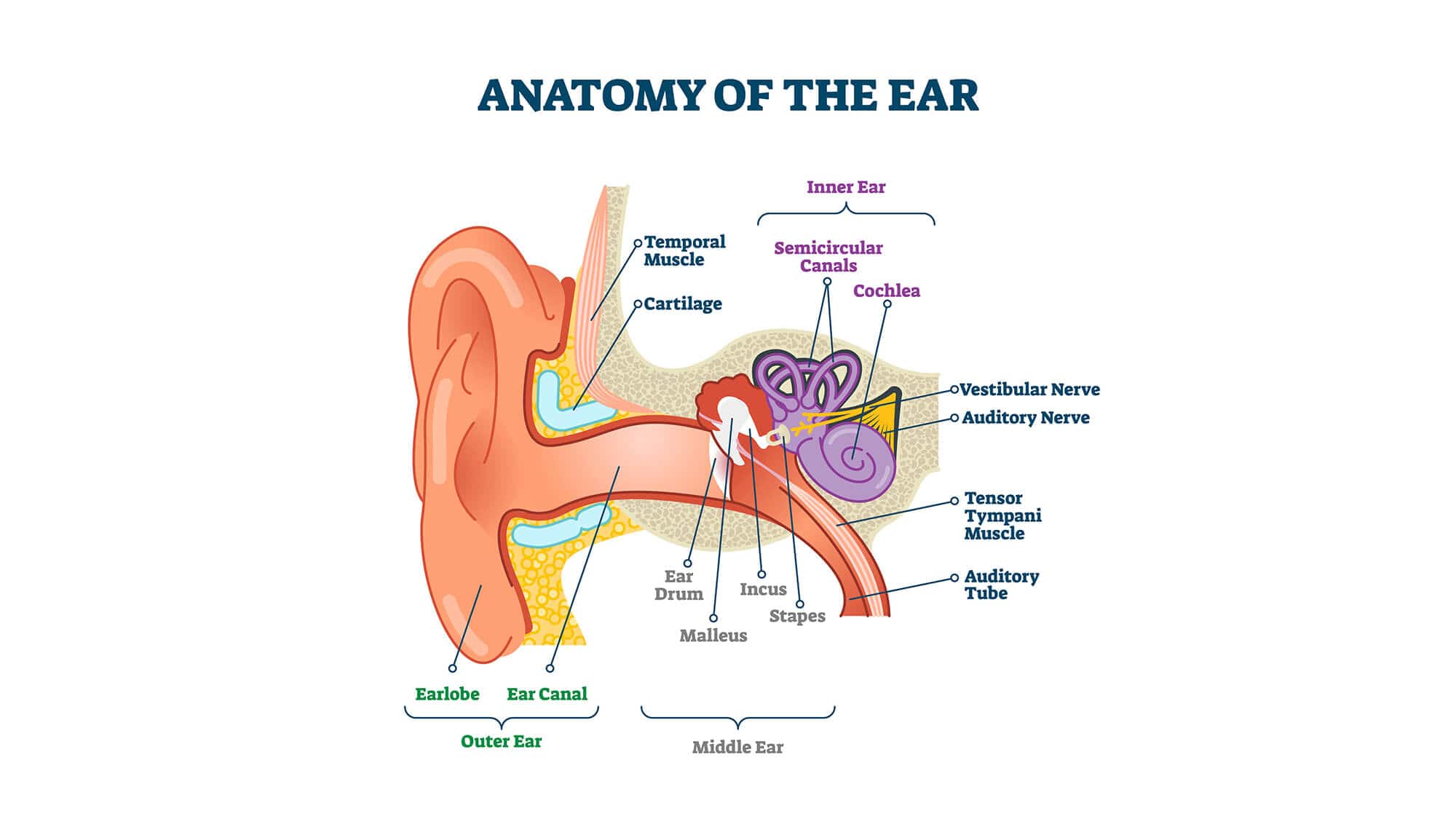Seven Things About the Ear
1.
The Three Classifications of the Ear
The ear is classified into three parts: outer, middle and inner.
Have you ever wondered how we hear the world around us? Well, our ears are amazing organs that help us do just that! They’re divided into three parts: the outer, middle, and inner ear.
The outer ear is the part of the ear that we can see on the outside of our heads. It’s made up of the pinna, which is the fleshy part of the ear, and the ear canal. The pinna helps to collect sound waves from the environment and directs them into the ear canal. The ear canal has small hairs and wax-producing glands that help protect our ears from foreign particles and amplify the sound waves.
The middle ear is the part of the ear that sits between the outer and inner ear. It consists of the eardrum, or tympanic membrane, and three small bones called ossicles: the malleus, incus, and stapes. When sound waves enter the ear canal and strike the eardrum, they cause it to vibrate. The ossicles then amplify these vibrations and transmit them to the inner ear.
The inner ear is the most complex part of the ear and is responsible for turning the sound vibrations into electrical signals that our brains can interpret. It’s made up of the cochlea, a spiral-shaped organ filled with fluid and tiny hair cells that respond to the vibrations. When the hair cells are stimulated by the vibrations, they create electrical signals that are sent to the brain via the auditory nerve.
Understanding how our ears work is important for keeping them healthy and treating any hearing-related issues we might have. So, the next time you hear a bird singing or a car honking, you’ll know that your amazing ears are hard at work!

6.
Four Modes of Energy
The ear processes energy through four modes: acoustic, mechanical, hydraulic, and electrical.
Hey there! Did you know that our ears are incredible organs that do some amazing things to allow us to hear and process sound? One of the coolest things about our ears is that they process energy in four different ways – acoustic, mechanical, hydraulic, and electrical.
The acoustic mode is all about how sound waves travel through the air and enter our ear canal. The mechanical mode happens when the three tiny bones in our middle ear amplify and transmit the energy of the sound waves to our inner ear.
In the inner ear, things get really interesting! The hydraulic mode is when fluid in the cochlea turns the mechanical energy into hydraulic pressure waves. Finally, the electrical mode is when hair cells in the cochlea convert the hydraulic pressure waves into electrical signals that are sent to our brain for processing.
Overall, the ear is an amazing organ that works in some pretty complex ways to allow us to hear and understand the sounds in our environment. So, next time you’re listening to your favorite song or chatting with your best friend, give your ears a little appreciation for all the hard work they do!
7.
24-7 for a Lifetime
The ear is designed to process sound 24/7 for an entire lifetime.
Our ears are amazing organs that are designed to process sound constantly for our entire lifetime. From the moment we are born until the day we pass away, our ears are always hard at work, capturing and interpreting the sounds around us.
The complex and intricate structure of our ears is perfectly designed to capture sound waves and transform them into electrical signals that our brain can understand. This process happens all day, every day, without any conscious effort on our part.
Of course, our ears are also designed to protect themselves from loud or damaging sounds, and we should take care to avoid excessive noise exposure to prevent damage.
Overall, the ear is an incredible and resilient organ that is essential to our ability to communicate, learn, and experience the world around us. So, let’s give our ears the appreciation they deserve for working so hard to process sound 24/7 for our entire lifetime!
Our Reviews
Pueblo, Colorado (Main Office)
Address
1800 Fortino BlvdPueblo, CO 81008
Phone
(719) 568-9700Hours
Monday - Thursday: 8AM - 4PM
Friday: 8AM - Noon


